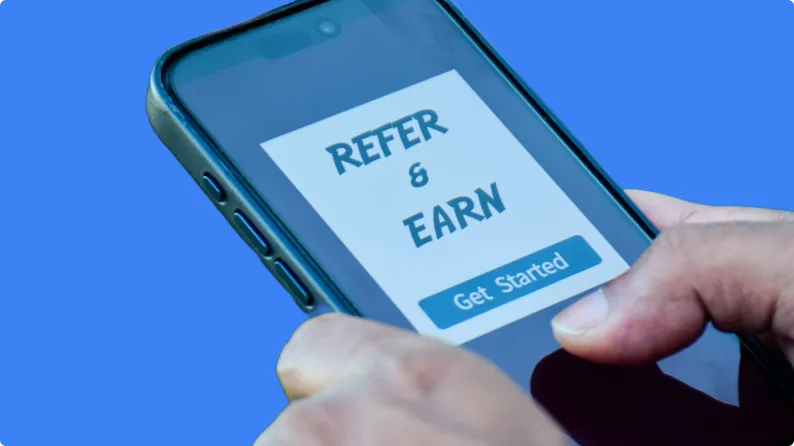Customer Referral Rewards and Incentives Guide: How to Build a Winning Program
While referral rewards and incentives come in many forms, digital gift cards have been in the limelight recently. For businesses, they are cost-effective than physical gift cards as they don't require printing, packaging, or shipping. They are easy to send, redeem, and track.
On this page
It looks like a simple, straightforward proposition: incentivize the customers who love your brand to drive in new customers. It’s a win-win situation, right? But not necessarily. For example, Worldwide101, a remote virtual assistant platform, stated that their referral program failed not once, but thrice, undermining their brand value while wasting both time and effort.
Their experience isn’t uncommon: businesses of all sizes have a hard time creating referral programs that work. While they focus on every little aspect, they forget to pay attention to the core of it, which is referral rewards and incentives.
To help you make the most of this referral marketing strategy, we have put together a detailed guide that explains the importance of referral incentives, their significance, best practices, reward ideas for customers, employees, and channel partners, and more.
What are referral rewards?
Referral rewards are incentives or benefits given to individuals for referring others to a product or service. They are designed to encourage people to spread the word about a brand and help businesses acquire new customers through personal recommendations.
Referral incentives can take many forms, including cash bonuses, discounts, free products or services, loyalty points, contest entries, exclusive access to products or events, and charitable donations. The goal of referral incentives is to motivate people to refer others by offering a tangible reward or benefit for their effort.
Referral incentives can benefit both the referrer and the person being referred. The referrer receives a reward for their effort, which can increase their loyalty and engagement with the brand.
The person being referred may receive a discount or other incentive to try the product or service, which can increase their likelihood of making a purchase and becoming a loyal customer.
How do referral rewards drive engagement?
Referral incentives can be a powerful tool to drive engagement, as they motivate existing users to bring in new users and increase the overall user base.
Here are a few ways incorporating the right referral incentives can drive engagement:
1. Encourages word-of-mouth promotion
Referral rewards motivate users to share their positive experiences with others, which can lead to increased word-of-mouth promotion. This can build brand awareness and attract new users who may not have otherwise heard of the product or service.
2. Creates a sense of exclusivity
Rewards can create a sense of exclusivity by making the referral program available only to selected individuals, providing a benefit that’s not available to others. It makes the invited participants feel special and creates loyalty towards the brand.
3. Boosts user loyalty
Referral rewards help boost user loyalty, as they provide existing users with a tangible benefit for promoting the platform or service. Users may feel more invested in the platform and more likely to continue using it over time.
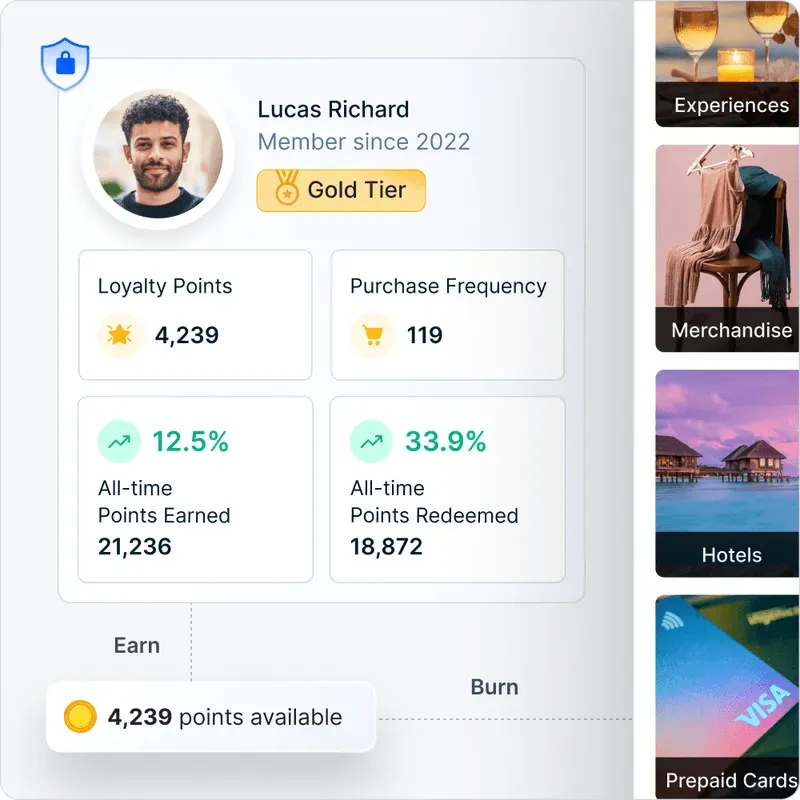
4. Increases user acquisition
People are motivated by the possibility of receiving a reward, especially if it is something of value or something that they perceive as being exclusive. Rewards tap into this motivation and encourage people to take specific actions that ultimately drive acquisitions.
Key elements of a good referral rewards system
A good referral rewards program should be simple, clear, easy to use, and flexible enough to accommodate different types of referrals and reward levels. It should also be transparent, timely, and customizable to encourage continued participation in the program.

Here are some key elements of a referral rewards system:
- Clear goals: A referral rewards program should have clear goals and objectives, such as increasing customer retention, generating new leads, or increasing sales.
- Customizable incentives: A referral reward system should allow you to customize incentives based on your business goals, such as offering different rewards for different types of referrals or for different referral sources.
- Referral process: A clear and easy-to-use referral process is vital. This can include a referral form on your website, a referral link or code, or an email or social media share.
- Tracking & reporting: A good referral rewards system should be able to track and report on your reward spends, no. of referrals, reward email open rates, redemption status, and more.
- Personalization: A referral rewards system must enable you to personalize your rewards to match the recipient preferences. This can include reward curation, custom messaging, branding, etc.
- Tech integrations: The ability to integrate with existing systems, such as your website, CRM, HRMS, LMS, etc. helps streamline the referral process and ensure accurate reporting.
- Flexibility: A good referral reward system should be flexible enough to include different types of referrals and reward levels. This allows you to tailor the program to your specific business needs.
- Timely rewards: Incentives must be delivered in a timely manner, ideally shortly after the referral is made. This shows the referrer that their efforts are appreciated and further, continue to refer others.
- Fraud prevention: Having fraud prevention measures in place ensures there’s no abuse of the program, such as limiting the number of referrals per user or using unique referral links or codes.
How do you create a customer referral program?
Let's explore the steps to create a program that rewards and strengthens customer relationships:
1. Set up the foundation
Before diving into a referral program, ensure your products and services are top-notch. The foundation of any successful referral program is a satisfied customer. Engage with them, understand their needs, and ensure they have a positive experience with your brand.
2. Target audience identification
Understand the demographics, preferences, and behaviors to engage the ideal customer. Tailor your referral program to resonate with this audience. By targeting the right people, you increase the chances of getting quality referrals who will benefit from your offerings.
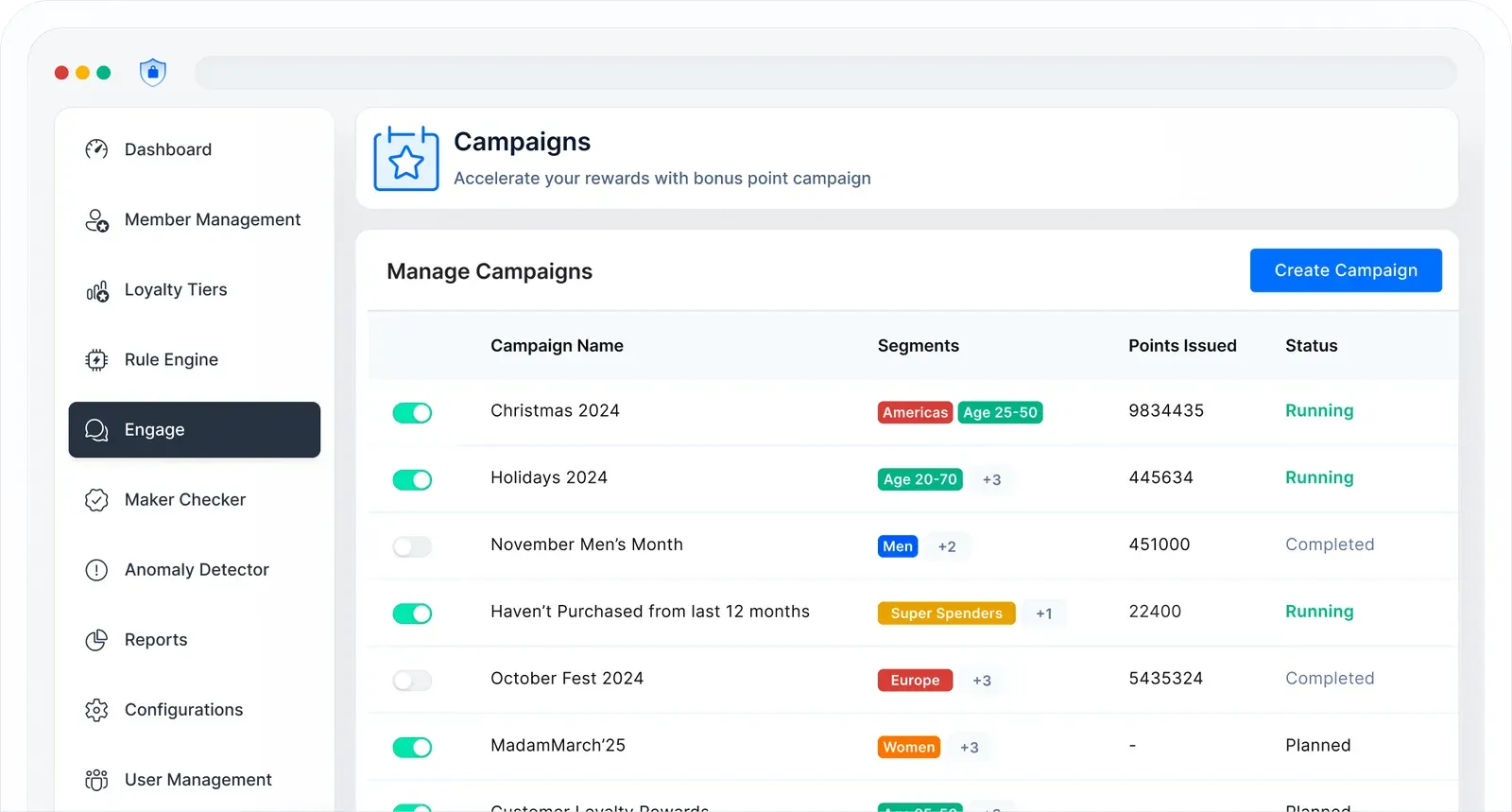
3. Design rewards and incentive program
Rewards are the driving force behind any referral program. Decide whether you want to offer monetary rewards, discounts, freebies, or exclusive access.
Consider a two-sided reward system where both the referrer and the referee get benefits. Such a system encourages more participation and creates a win-win situation for all parties involved.
4. Make it easy to share
The easier it is to refer; the more likely customers will do it. Offer multiple sharing options through social media, email, or direct links, and keep the process straightforward.
5. Draft a clear terms & conditions
You must ensure clarity and transparency by clearly outlining the rules, eligibility criteria, reward distribution process, and other pertinent details. It not only prevents potential disputes but also builds trust with your participants.
6. Promote rewards program extensively
Visibility is essential for the success of your referral program. Use your website, email newsletters, social media channels, and even offline methods to promote it. Craft compelling messages and calls to action to make potential referrers want to be a part of it.
7. Track your referral’s mechanisms
Implement robust tracking mechanisms to monitor the success of referrals, conversions, and the program. Analyze this data to understand which strategies work and which need tweaking.
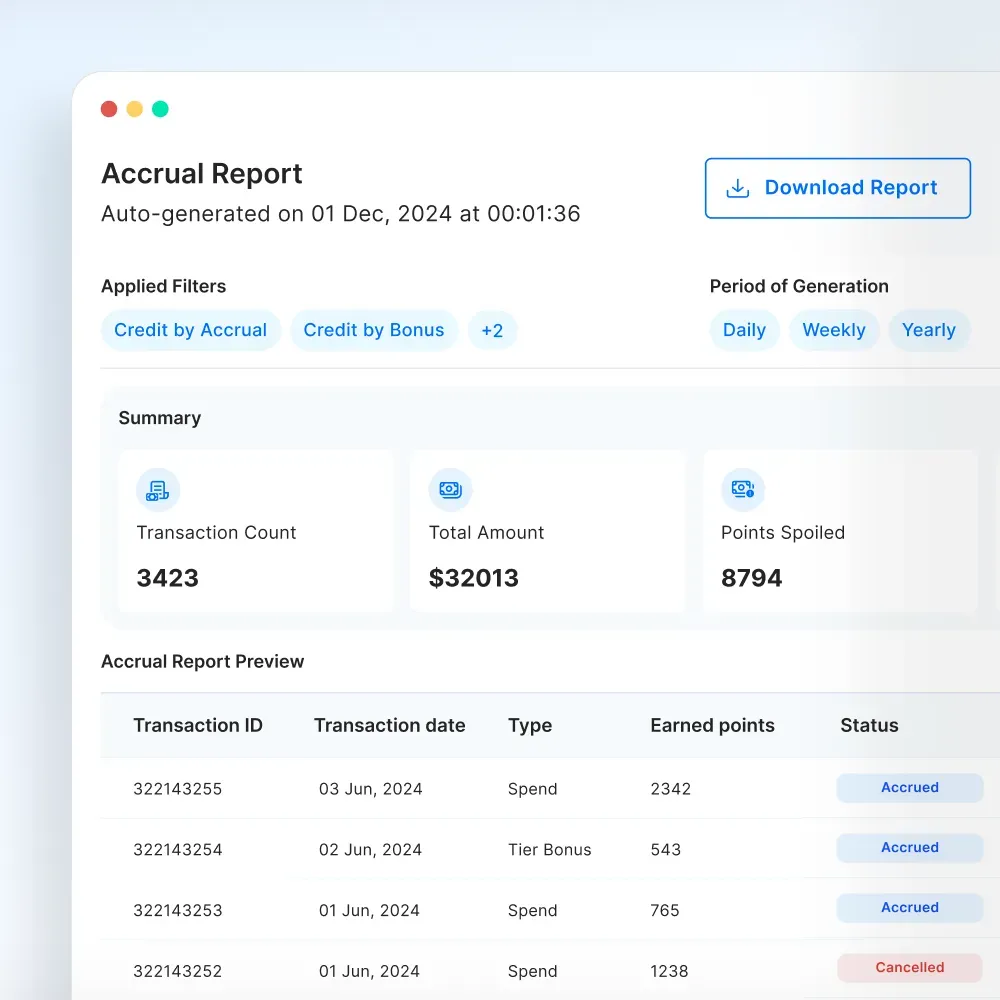
8. Collect feedback to understand your customers
Regularly engage with your participants to understand their experiences, challenges, and suggestions. It not only helps in refining the program but also strengthens your relationship with your customers.
9. Try interesting engagement strategies
Beyond the referral program, maintain regular touchpoints with your customers. Send them updates, appreciation notes, or exclusive offers. A well-engaged customer is more likely to refer and promote your brand organically.
10. Seek acknowledgment and recognition
Identify and reward those who consistently bring in high-quality referrals. It motivates them to continue and inspires others to participate actively.
11. Have a compliance check in place
Every region has its regulations. Ensure your referral program complies with local laws, especially concerning data privacy and marketing. It safeguards your brand's reputation and prevents potential legal complications.
12. Review the performance
A referral program is not a set-it-and-forget-it initiative. Regularly review its performance, gather insights, and iterate. It ensures that your program remains effective and relevant and drives growth for your business.
Referral reward ideas for customers, employees, sales, and channel partners
Do you know what makes or breaks a referral program? It’s the REWARDS. The worst possible choice you could ever make is to give people something that they dislike, that is of no use to them, or that fails to resonate with your brand identity.
The prime reason to create a referral marketing program is to drive quality leads. Attractive rewards align ideally with what your brand stands for. The type of referral rewards you choose must boost the relationship between your customers with you and should get people to talk about you. We know that this may sound poetic to you, but we've got your back.

Here’s a section that highlights referral reward ideas for different users so you can find the right one for your audience.
For customers
Here is a list of referral reward ideas for customers:
- Discounts: Encourage repeat purchases and word-of-mouth.
- Digital gift cards: Gifts card are easy to send, customizable, and brand-friendly.
- Loyalty points: Encourage continuous referrals with loyalty points with minimal cost.
- Free products/services: Boost trial and build trust in offerings.
- Donations/charity: Appeal to emotionally-driven, socially conscious customers.
- VIP treatment: Create exclusivity and boost customer lifetime value.
For employees
Here is a list of referral reward ideas for employees:
- E-gift cards: Instant and flexible rewards for referrals.
- Cash bonus: High perceived value and motivation for hiring referrals.
- Experiential rewards: Memorable incentives like trips or events.
- Flexible work options: Appeal to those valuing work-life balance.
- Team activities: Boost engagement and retention through shared experiences.
- Course subscriptions: Invest in employee growth and upskilling.
For sales & channel partners
Here is a list of referral reward ideas for channel partners:
- Commissions: Directly tied to performance, highly motivating.
- Event invitations: Strengthen relationships through networking.
- Co-branded marketing: Mutual exposure and trust-building.
- Training & support: Help partners sell better and refer more.
- Exclusive access: Reward loyalty and deepen partnerships.
- Heavy discounts: Encourage higher referral volume with cost-effective incentives.
5 best practices of running a referral incentive program
Why would anyone talk about your brand for free? Probably not every time. It would help if you had something in return for their effort and does not necessarily have to burn a hole in your pockets.
While there are many ways to incentivize influencers and customers, here are a few ideas you can apply for your next referral incentive program:
1. Gift them pre-launch product features
A B2B referral program incentive example is the launching of new features. You can give customers the product feature for free, every time they refer to their network and bring in a sign-up. This is your way of thanking them for being loyal to your brand.
2. Give discounts on products or services
This is perhaps one of the most common influencer incentives or influencer program incentives. You can identify specific influencers in the industry that can be gifted your offerings at a discounted rate if they agree to recommend your brand to their followers a set number of times.
Not so surprisingly, discounts also work well as incentives for referral incentive marketing. Your customers whose referrals get converted can be rewarded with discounts on your products or services. Premium sneaker brand, Greats ran a similar referral program for its customers via email.
3. Sponsor them to attend an event
Is there any event your industry influencer might want to attend? Sponsoring them is a referral incentive program. This would be cost-effective for you at a time when virtual conferences are the norm. You do not even have to cover their travel expenses.
If you can get free or discounted passes to them when they give a shout-out to your brand on social media or any of their marketing channels, that will be great. Plum’s influencer dashboards can make tracking such mentions easy for you and also deciding influencer program incentives.
4. Give away freebies to your customers
Everyone loves receiving products or using services for free. Motivate your customers to invite their friends or family to use your product, promising them your product for free.
Here is a referral incentive program example: Dropbox increased its user base from 100,000 to 400,000 through its referral program by giving away 16GB of storage space for free!
5. Use influencers in brand video
If your brand marketing frequently uses marketing, include influencers and even your customers in them. In 2020, Fujifilm’s Instax released a social film comprising them to promote their range of cameras. What was the influencers’ incentive? They get to enjoy screen time on a massive platform for a lifetime.
Common concerns when choosing referral rewards
When it comes to choosing referral rewards, businesses often grapple with several common concerns that can impact the success of their referral programs. Here are five of these common concerns:
- Cost-effectiveness: Businesses worry about the financial implications of offering rewards for referrals. They want to balance incentivizing customers adequately and managing the associated costs to ensure a positive return on investment.
- Relevancy: Ensuring the rewards are attractive and relevant to the referrer and the referred is challenging. Choosing rewards that resonate with the target audience and align with the company's products or services is crucial.
- Tracking and fraud prevention: Accurately tracking referrals and preventing fraudulent or fake referrals can be a significant concern. Businesses need reliable systems in place to track and verify referrals while safeguarding against abuse.
- Customer engagement: Some businesses worry that referral rewards might lead customers to refer others solely for the rewards rather than genuine enthusiasm for the product or service. Maintaining authentic customer engagement and loyalty remains a priority.
- Legal and compliance issues: Implementing a referral program can sometimes raise legal and compliance concerns, such as adhering to privacy regulations, ensuring transparency in reward terms, and complying with regional or industry-specific rules.
Addressing these concerns through careful planning, clear policies, and effective communication is essential to building a successful referral program that benefits the business and its customers.
How Qatar’s leading bank boosted customer engagement with Loyalife
A leading financial institution in Qatar, renowned for its digital prowess and adherence to Islamic banking principles, sought to enhance customer engagement and loyalty. Serving both retail and corporate clients, the bank aimed to distinguish itself in a competitive market by offering innovative, customer-centric solutions.
Challenges faced
The bank identified several key challenges:
- Customer acquisition: Attracting new clients in a saturated banking environment.
- Engagement across products: Encouraging customers to utilize a diverse range of banking services.
- Repeat transactions and loyalty: Fostering long-term relationships and repeat business.
- System integration: Implementing a loyalty solution that seamlessly integrates with existing banking platforms.
Solution
To address these challenges, the bank partnered with Loyalife, to design and manage a comprehensive loyalty program encompassing various banking products, including credit cards, debit cards, internet banking, and financing options. Key features of the solution included:
- Personalized loyalty experience: Tailored rewards and experiences based on individual customer behaviors and preferences.
- Seamless redemption portal: A modern, mobile-friendly platform enabling customers to browse and redeem points effortlessly via Single Sign-On (SSO), enhancing both security and convenience.
- Diverse reward options: An extensive catalog featuring gift vouchers, merchandise, electronics, travel rewards, hotel stays, and mileage top-ups, catering to varied customer interests.
- Mobile-first design: Optimization for mobile devices, allowing customers to access rewards anytime and anywhere, thereby boosting engagement.
Additionally, Loyalofe’s API-driven integration ensured the loyalty program was seamlessly incorporated across all customer touchpoints, from in-app interactions to in-branch experiences.
Impact
The implementation of Loyalife yielded significant results:
- 146% increase in customer engagement: Personalized rewards and diverse redemption catalog captivated customers, leading to heightened interaction with the bank's offerings.
- 170% growth in transaction volume: The appealing loyalty program motivated customers to conduct more transactions, driving substantial growth in transaction volume.
- 62% expansion of user base in 22 months: The loyalty initiatives attracted a broader clientele, resulting in a notable increase in the bank's customer base within a short period.
With Loyalife, organizations can build data-driven, customizable loyalty programs that delight customers and drive long-term growth. Its integrated rewards marketplace and seamless API setup make loyalty effortless and impactful.
Scale referral loyalty with Loyalife
A great referral program doesn’t just stop at delivering rewards—it builds relationships that compound over time. That’s where Loyalife can help. More than just a referral platform, Loyalife helps you turn casual promoters into loyal power advocates by combining intelligent automation, personalized journeys, and built-in loyalty mechanics.
Whether you’re running a customer-facing referral engine or managing channel partner incentives, Loyalife is built to make every touchpoint feel intentional, rewarding, and on-brand.
What makes Loyalife a game-changer?
- Tiered rewards that grow with your users: Don’t settle for one-size-fits-all rewards. Loyalife lets you build multi-tiered structures that incentivize repeat referrals, high-value conversions, and long-term advocacy. The more your users refer, the more exclusive their rewards become.
- Branded journeys, not generic touchpoints: Make every referral experience feel like an extension of your brand. With white-labeled interfaces, you can customize the entire reward journey—emails, dashboards and landing pages—to match your voice and vibe.
- Real-time tracking and ROI insights: Know exactly what’s working and where to optimize. From redemptions to engagement, Loyalife gives you the data you need to tweak campaigns, improve performance, and prove impact to leadership.
- Plug-and-play integrations: No need to reinvent your workflow. Loyalife connects seamlessly with your CRM, marketing stack, or sales automation tools, so you can trigger rewards, send reminders, and sync data without lifting a finger.
- Automated fulfillment across reward types: From gift cards and vouchers to loyalty points and exclusive perks, Loyalife supports automated, real-time reward delivery, ensuring your users never wait to feel appreciated.
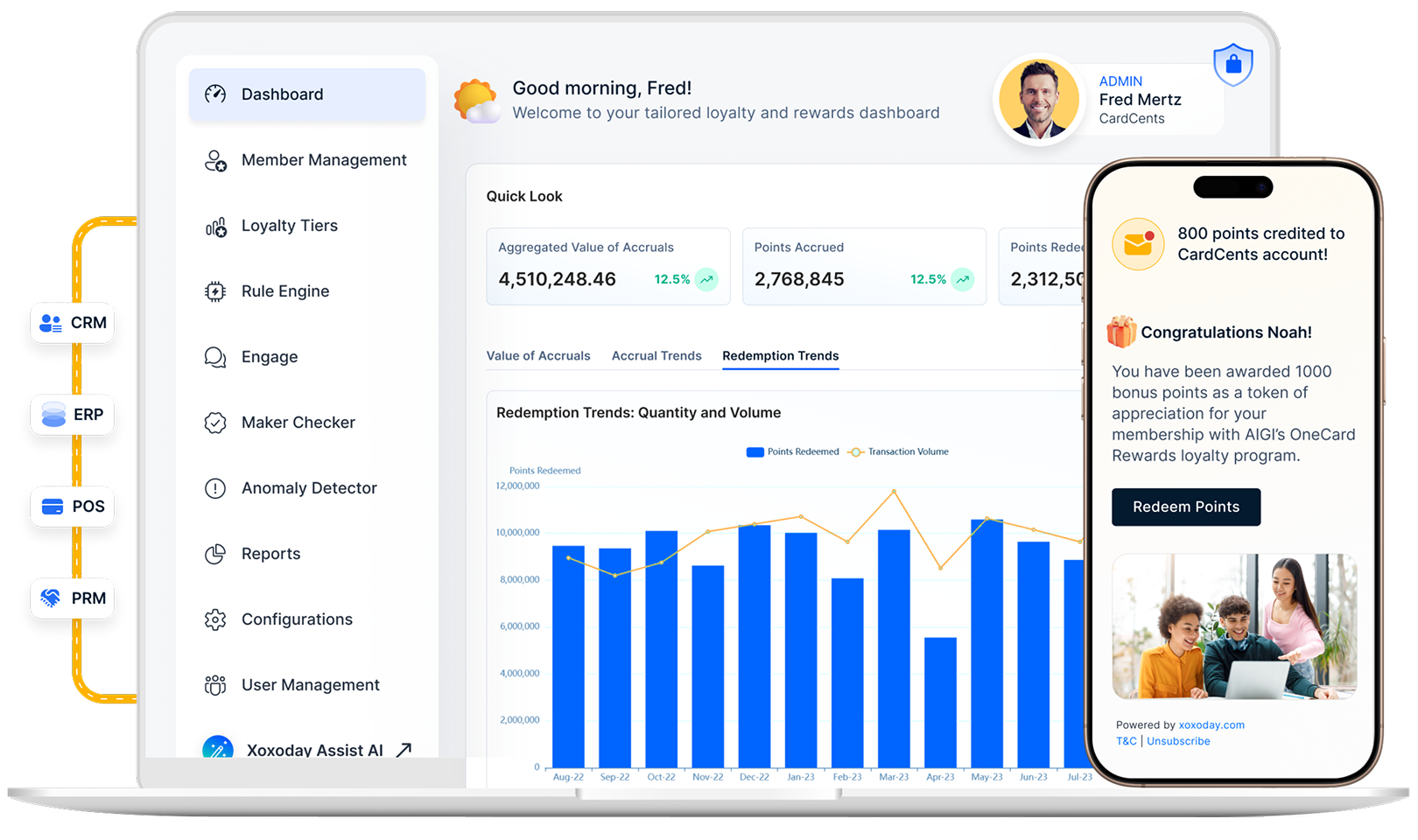
Scale loyalty via referrals with Loyalife
Loyalife transforms your referral strategy into a loyalty engine that grows with every interaction. Ready to turn referrals into lifelong brand advocates?

